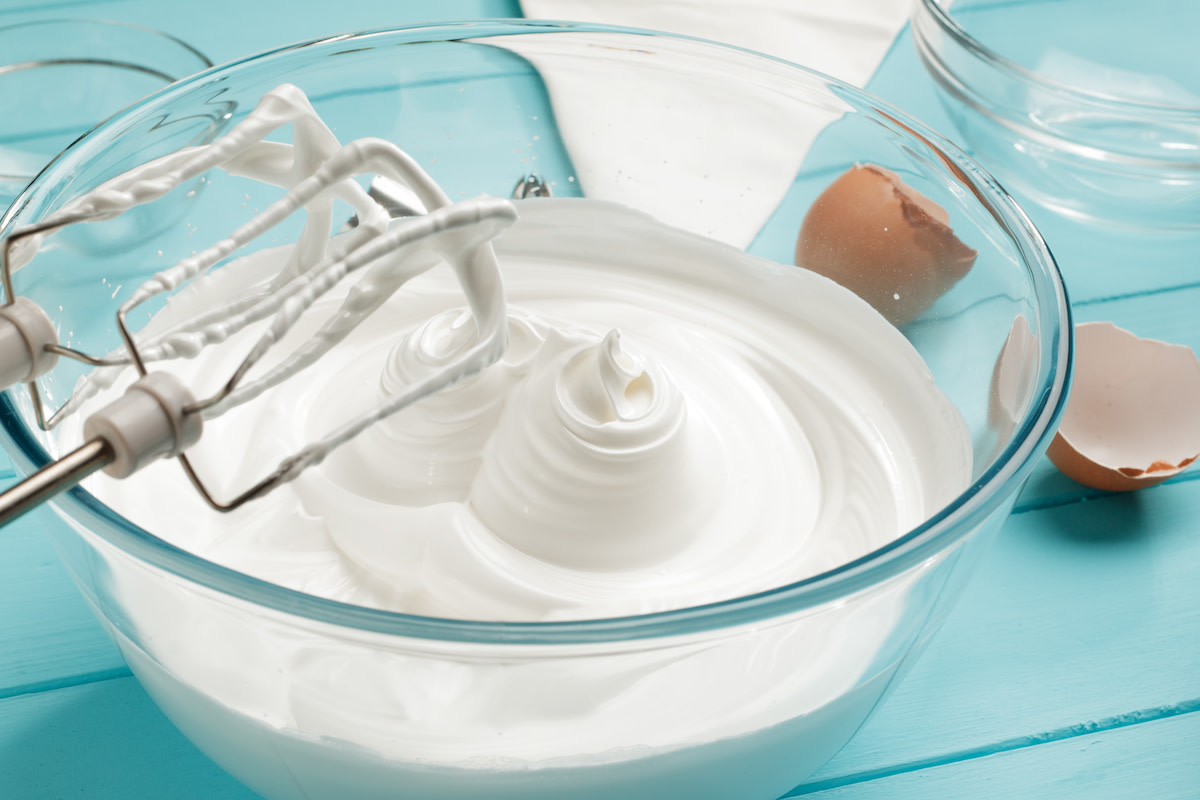A Guide to Making Meringues + Recipes for Swiss, French, and Italian Meringues
Written by MasterClass
Last updated: Aug 5, 2021 • 4 min read
Meringues contain few ingredients, but it can be tricky to master the technique that creates their wispy structure and unique texture: crisp, yet ethereally light.
Learn From the Best
What Is Meringue?
A meringue is a foam of air bubbles enclosed in egg white and stabilized by sugar, first developed in the seventeenth century by cooks who used bundles of straw as whisks. Nowadays, we tend to whip our whites at high speed in a stand mixer, but there’s still quite a bit of technique involved in making meringue.
What Goes Into a Meringue?
In its simplest form, a meringue is a foam of liquid egg whites whipped into a solid-like structure and stabilized by a combination of sugar and heat. The whipping creates air bubbles, which get enclosed by tiny temporary walls created by the proteins in the egg whites. Sugar increases the stability of the walls by thickening them and slowing the evaporation of water during the cooking process, while heat sets the meringue.
3 Different Types of Meringues
Although they’re all made with egg whites and sugar beaten until stiff peaks form, the three types of meringue recipes—Italian, Swiss, and French—differ in how and when heat is incorporated for stabilization.
- 1. Italian Meringue is the most stable of the three because it requires hot sugar syrup to be drizzled into whipped egg whites, so you get beautiful, fluffy peaks. It’ll be satiny in texture and yield tall, proud peaks when you frost cakes or pipe it onto a tart or pie, or make it into a quick meringue buttercream.
- 2. French Meringue is the easiest way to make meringue, since it simply involves whisking egg whites with sugar. French meringue is made by mixing sugar with raw egg whites and is the least stable type of meringue. As such, it will usually need to be baked, so it’s best used when folded into other batters, giving them volume and lightness, or baked into crunchy meringue cookies. Find our easy recipe for French meringue here.
- 3. Swiss Meringue, aka meringue cuite, is smoother and denser than French meringue, but less stable than Italian. Marshmallow-y Swiss meringue is made by beating egg whites and sugar together in a double boiler (a pan or bowl set above boiling water) until the sugar is fully dissolved and the mixture is hot to the touch. It’s then removed from the heat and further beaten until doubled in volume. Swiss meringue tends to achieve less volume than the other varieties, because the sugar is added early on in the whipping process, interfering with the ability of the egg proteins to unfold and bond with each other to form the walls that support the little bubbles of air. Find Chef Dominique Ansel's recipe for Swiss meringue here.
7 Tips for Making Perfect Meringue
Meringues can be notoriously finicky, but there are a few tricks that will help you achieve perfect meringues every time:
- 1. Make sure your egg whites are free of any traces of yolk and that your mixing bowl and whisk are clean and dry.
- 2. Use a large bowl, at least eight times bigger than the starting amount of egg white.
- 3. Use a copper or silver-plated mixing bowl, or add a pinch of powdered copper supplements to the mixture.
- 4. The more powerfully you whisk, the quicker the egg whites will aerate. Do yourself a favor and use a large balloon-style whisk or, even better, an electric mixer.
- 5. Don’t skimp on the sugar—it’s not there just for flavor. Sugar bonds to water and slows its evaporation, so if there’s not enough sugar in your mixture during baking, the water in the egg whites will evaporate before the egg proteins have time to form a stable structure around the air bubbles. You can also use cornstarch to mimic the effects of sugar. (Powdered sugar contains about 10 percent cornstarch.)
- 6. Although not strictly necessary, you can use stabilizing agents to prevent your egg whites from weeping, or leaking water. Stabilizing agents work by bonding to the egg white proteins, so that they can’t form the super strong bonds with each other that tend to push water out. Once the egg whites just start to develop some structure, add an acid in the form of ⅛ teaspoon cream of tartar or ½ teaspoon lemon juice per egg white.
- 7. Always store baked meringues in an airtight container at room temperature, since sugar attracts moisture from the air, meringues left exposed to humid air will form beads of sweat.
5 Uses for Meringue
- 1. Uncooked meringue can then be folded into batters for soufflés, ladyfingers, ice creams, and mousse. It’s a key ingredient in the French-style cake called biscuit.
- 2. Piped into shells and baked in a low oven, the meringue becomes a shatteringly crisp base for whipped cream and fruit for French vacherins, Australian pavlova, and English Eton mess.
- 3. Meringues can be lightly poached for the French dessert îles flottantes, where poached meringues top a bowl of crème anglaise.
- 4. Meringue is often baked on parchment paper-lined baking sheets into simple, gluten-free cookies called meringue kisses, which can be flavored with chocolate chips, freeze-dried fruit, sifted cocoa powder, vanilla extract, or finely ground nuts.
- 5. Stable Italian meringue in particular is ideal for frosting cakes and pies—on its own (as in lemon meringue pie and baked Alaska) or as a component of Italian meringue buttercream frosting.
Learn more baking techniques in Chef Dominique Ansel’s MasterClass on French pastry fundamentals.
